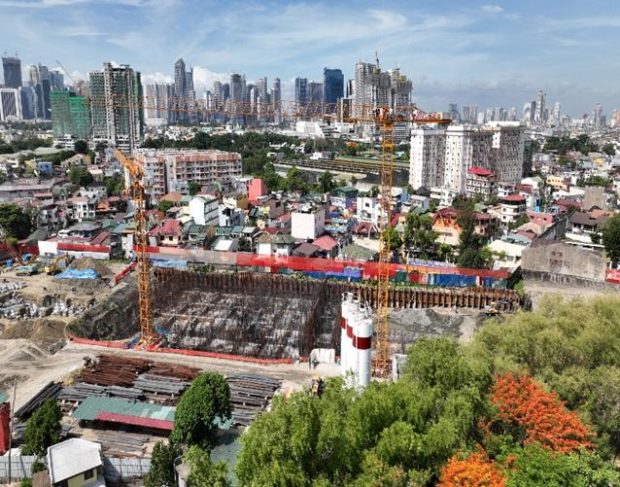
Ongoing construction of the P4.7-billion Mandaluyong West Sewerage System which will have the capacity to treat 60 million liters of wastewater every day (expandable to 120 million liters per day). This wastewater treatment facility is just part of Manila Water’s massive Three-River System Masterplan to provide better sanitation and protect natural waterways.
MANILA, Philippines — To help rehabilitate and protect natural waterways and provide its increasing customer base with the best sanitation and sewerage services, Manila Water is investing in the P37.3-billion Three-River System Wastewater Masterplan.
The masterplan involves massive construction of wastewater treatment facilities and sewer network across the Marikina River, San Juan River, Pasig River, and Laguna Lake systems that comply with regulatory and environmental standards. These wastewater projects are designed to collect, convey, and treat wastewater generated within their respective catchment areas.
To support the Marikina River System, the San Mateo-Rodriguez and Quezon City East sewerage systems will cater to customers in some portions of Marikina, San Mateo-Rodriguez, Antipolo, and eastern portions of Quezon City. With a combined project cost of P10.2 billion, the two sewerage systems will serve around 129,000 residents by 2046.
The Mandaluyong West, Quezon City South, and San Juan South Sewerage System will cover portions of catchments draining towards San Juan River and Pasig River systems. The P20 billion project will have a capacity to treat 60 million liters (expandable to 120 million liters) of wastewater per day conveyed through a 53-kilometer sewer network.
In addition, the remaining segments of the North and South Pasig Sewerage System will also be constructed to help protect the Pasig River System. With a combined project cost of P2.8 billion, the sewerage systems will have treatment provisions for households in Pasig and portions of Quezon City, Mandaluyong, Cainta, and Taytay.
Up east of Metro Manila, the P1.6-billion Hinulugang Taktak Sewerage System is already taking shape in Antipolo City. It will treat 16 million liters of wastewater per day before releasing it into waterways. Furthermore, Manila Water is also set to deploy new desludging trucks and construct the Pinugay Septage Treatment Plant to ensure continued sanitation services for residents of Baras, Pililla, Tanay, and Jala-jala in Rizal.
This massive investment in wastewater treatment facilities is anchored on Manila Water’s environmental sustainability efforts, which aim to reduce pollution produced in its operations. It also aligns with the Marcos Administration’s prioritization of developing climate-resilient infrastructure and, at the same time, aids in the rehabilitation of the environment.
Aside from upgrading its wastewater treatment services to protect natural waterways, the company is also particularly involved in the reforestation and protection of key watersheds. More than 1.2 million trees had been planted by Manila Water through its watershed management program as of 2021.
RELATED STORY:
Manila Water intensifies water, wastewater service expansion in East Zone